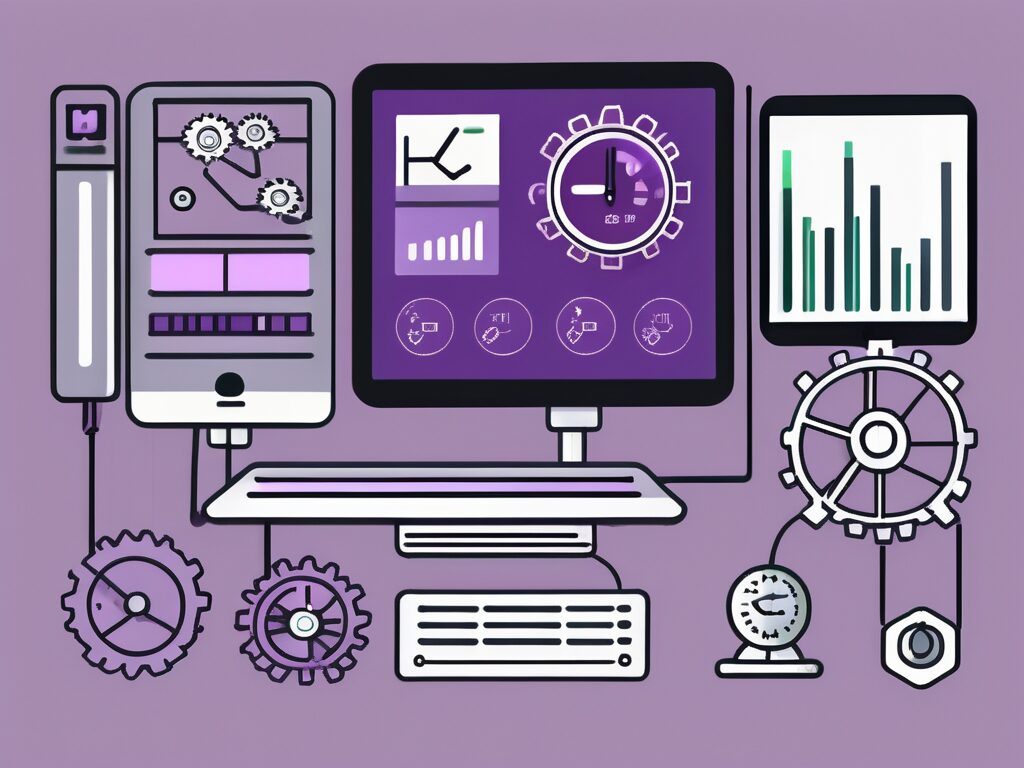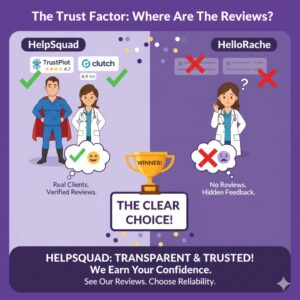7 EHR efficiency strategies to reduce documentation time
23 Apr 2024 By: Mary Dellosa
Updated
To boost EHR efficiency and cut documentation time, adopt these seven strategies: streamline workflows, use templates, train staff effectively, integrate voice recognition, apply AI tools, standardize data entry, and regularly review processes. These methods enhance productivity, reduce errors, and save valuable time for healthcare providers.

Understanding EHR and Its Importance
EHRs provide a digital way to handle patient information. Moving from paper to EHR systems makes it easier to access information, improves how teams talk to each other, and helps share data between healthcare places.
EHR systems are vital because they involve patients in their care. Patients can access their health records online, see test results, and chat with their doctors easily. This clear communication helps patients and doctors work well together, boosting health and happiness.
The Role of EHR in Healthcare
EHR systems are vital in current healthcare. They let doctors view all a patient’s health details, like medications, allergies, and treatments, in one place. This helps doctors collaborate more effectively, make fewer errors, and make wiser health decisions.
EHRs also help look after the health of whole communities. They collect data to spot health trends, track diseases, and watch over public health. This helps healthcare teams prevent illnesses, use resources wisely, and improve everyone’s health.
The Impact of EHR on Documentation Time
While EHR systems provide many benefits, they also pose challenges, especially in documentation time. Moving from paper records to digital documentation demands that healthcare professionals adjust to new workflows and learn EHR interfaces.
Once healthcare providers master EHR systems, their paperwork becomes quicker and easier. Using templates, shortcuts, and fast commands in EHR software can cut down on the time spent on documentation. This lets doctors spend more time on patient care and less on paperwork. Continuous training and support are essential to really benefit from EHR systems and keep clinic work flowing smoothly.
Main Problems in EHR Documentation
As healthcare providers start using EHR systems, they often face issues with documentation that can lower efficiency and take more time.
One big problem in EHR documentation is making sure data entry is complete and correct. Providers must correctly input all patient information to maintain precise medical records, which can be time-consuming with extensive histories or complex conditions.
Time-Consuming Data Entry
Data entry is crucial in EHR documentation but can be slow as healthcare professionals navigate through multiple screens and fields.
Being accurate in data entry is crucial for keeping patients safe and ensuring they get good care. Mistakes or missing information can cause wrong diagnoses or incorrect treatments. Providers need to work quickly but also take care to enter data correctly to make sure patients get the best outcomes.
Navigating Complex User Interfaces in EHR
The complexity of EHR interfaces can slow down documentation. Healthcare professionals may struggle to find the right fields or understand system functions, leading to errors and longer documentation times.
EHR interface designs differ widely, adding complexity for healthcare providers. Some systems have unintuitive layouts or confusing navigation, needing extra training to use effectively. Healthcare organizations may have to invest in continuous education and support to help staff use EHR systems efficiently.
7 Strategies to Enhance EHR Efficiency
To boost EHR efficiency, healthcare organizations can adopt various strategies. Let’s explore some methods that can transform how healthcare professionals use electronic health record systems.
Streamlining Data Entry Processes
We can make entering data into EHR systems easier by using simple forms, dropdowns, checkboxes, and auto-fill fields. This lets healthcare workers devote more time to patient care and less to paperwork, simplifying their tasks.
Creating Easy-to-Use Interfaces
By making navigation and appearance simpler in the system, healthcare workers can find information quicker and complete their paperwork faster. Imagine a system that naturally helps healthcare professionals through their work, making it smooth and easy.
Utilizing Voice Recognition Technology
Voice recognition technology improves EHR systems by letting healthcare workers speak their notes directly into the system. This saves time and reduces errors for more quality patient care.
Using Artificial Intelligence and Machine Learning
These technologies can look through medical data, offer tips for writing up reports, and spot possible mistakes, making paperwork faster and more precise. Imagine a system that learns how healthcare workers do their documentation and gives helpful advice right when they need it. Using AI and ML can really change how efficient EHR systems are.
Prioritizing Training and Support
Proper training and steady support are crucial for EHR success. By teaching healthcare workers thoroughly and offering continuous help, we can make them more skilled with the system and quickly solve problems, reducing paperwork time. Investing in training and support empowers the staff to use EHR systems effectively and boost overall efficiency.
As healthcare organizations enhance EHR systems, these strategies offer a glimpse into the future of healthcare records. By simplifying data entry, using voice recognition, applying AI and ML, and providing good training and support, healthcare workers can focus more on patient care and less on paperwork. The future is bright for EHR efficiency.
Outsourcing in EHR
Hiring outside helps for tasks like data entry and keeping records can make things easier for healthcare providers. This way, they can spend more time taking care of patients.
Before handing off tasks, it’s crucial to carefully check that the outside services are skilled, follow security rules, and can work well with current EHR systems.
Outsourcing tasks like data entry and transcription can save money. Healthcare organizations can cut costs on salaries, benefits, and training by not needing as many in-house staff for these jobs. Plus, outsourcing gives access to special skills and technology that might not be available inside the organization, which can make services better and more efficient.
Monitoring and Analyzing Documentation Metrics
Regular checks and analysis of documentation metrics can give important clues on where to improve and help make things more efficient. Healthcare organizations should set goals and keep an eye on things like how long documentation takes, error rates, and how often tasks are finished to spot problems and make specific improvements.

By spotting common mistakes in documentation, like often-used open text fields or repeated data entries, organizations can plan better ways to manage work, remove duplicates, and make documentation smoother.
Monitoring documentation metrics means more than just looking at how many tasks get done and how many mistakes happen. It also involves checking what kinds of errors are made, whether they are wrong medical details or tech glitches. Knowing why these errors happen can help organizations create specific training or improve their systems to fix these issues effectively.
Measuring the Impact of Efficiency Strategies
It’s important to check if efficiency strategies are working as expected. By assessing how well these strategies perform, healthcare organizations can make choices based on data and keep improving their documentation processes.
Evaluating Time Savings
A key part of checking if efficiency strategies work is to look at the time saved in EHR documentation. Healthcare organizations can see how much time they save by comparing how long tasks took before and after these strategies were used. This helps them see the benefits and find more ways to improve.
For instance, a healthcare group started using voice recognition to make data entry faster. They found out that this method let healthcare workers finish their documentation 30% quicker than before. This big time-saving meant they could spend more time caring for patients, boosting efficiency and productivity.
Assessing User Satisfaction in EHR
User satisfaction is also important when checking how well efficiency strategies work. Surveys, interviews, and feedback from healthcare workers can offer important insights into how easy and effective these strategies are, helping to shape future improvements.
For example, after making the EHR system easier to use, the healthcare organization surveyed healthcare workers to see how they liked it. The survey showed that 85% of the workers found the new system easy and straightforward to use. This positive feedback confirmed that the changes were helpful and gave useful ideas for more improvements, making sure the EHR system fits what its users need and want.
Tracking Patient Outcomes
Trending Topic
Doctors can track medical information quickly, improving care. Patients avoid lots of paperwork and get their prescriptions faster. EHRs make health care safer and more efficient for all.
In the end, the goal of these efficiency strategies is to help patients get better care. By keeping track of how patients do, healthcare organizations can see how changes to EHR systems affect the quality of care, how happy patients are, and overall health results.
For example, a healthcare organization used artificial intelligence and machine learning to automate some paperwork tasks. This let healthcare workers spend more time with patients. After looking at patient results, they saw fewer medication mistakes and better follow-through on treatment plans. This improvement showed that the strategies worked well and suggested more ways to use technology to make healthcare better.
In conclusion, using efficient strategies in EHR documentation is key to cutting down on paperwork time and boosting patient care. By knowing the importance of EHRs, tackling main challenges, and using methods like simplifying data entry, making systems easy to use, using voice recognition, and adopting AI and ML, healthcare organizations can make EHRs work better and improve their documentation processes.
Ready to boost your EHR efficiency? With HelpSquad BPO, you can let our skilled virtual assistants handle your routine paperwork, letting your healthcare team focus on patient care. Our bilingual agents are here 24/7 to offer excellent customer support and back-office services, all starting at just $8.50 per hour. Improve your team’s productivity and the quality of patient care by trying out HelpSquad today. Start your trial now!
FAQ’s
What are the most useful EHR documentation tools for efficiency?
EHR documentation tools for efficiency include structured forms (dropdowns, checkboxes, radio buttons), auto-fill and auto-complete fields, templates for common visit types, keyboard shortcuts, voice recognition, and AI-powered prompts. Together, they cut down on free-text typing, reduce clicks, and help providers move through encounters in a predictable, repeatable way while keeping data clean and standardized. HelpSquad
How can I reduce charting time in my EHR without hurting accuracy?
To reduce charting time in EHR systems, the article suggests simplifying data entry screens, using structured fields wherever possible, taking advantage of templates and shortcuts, and adding voice recognition for longer notes. Pair that with solid user training and ongoing support so staff know the quickest paths through the system. The goal is to design workflows that capture all required details with fewer clicks and less duplicate entry, so providers spend more time with patients and less time staring at screens. HelpSquad
What methods improve efficiency in healthcare documentation management across a whole clinic?
At the organization level, the guide recommends several methods to improve efficiency in healthcare documentation management: streamline data entry with smart forms and auto-fill, work with your vendor to simplify complex user interfaces, roll out voice recognition for clinicians who dictate a lot, adopt AI/ML tools to flag errors and suggest wording, prioritize training and ongoing help for staff, consider outsourcing low-value data entry tasks, and monitor documentation metrics regularly to spot bottlenecks. HelpSquad
Can using templates in data entry really boost efficiency, or do they just create “note bloat”?
Used well, templates absolutely boost efficiency: they pre-fill common elements, guide clinicians through required fields, and reduce missed information, which shortens documentation time and lowers error rates. The article notes that templates, shortcuts, and quick commands are key to making EHR documentation faster once staff learn the system. The risk of “note bloat” usually comes from overstuffed or poorly designed templates, so the trick is to keep them concise, role-specific, and reviewed regularly based on clinician feedback. HelpSquad
How do voice recognition and AI tools help reduce charting time in EHRs?
Voice recognition lets providers speak their notes directly into the EHR instead of typing, which the article says can cut documentation time by about 30% in some examples. AI and machine learning tools can then scan data, suggest phrasing, highlight missing pieces, and flag potential errors in real time. Together, these tools turn documentation into a faster, more guided process instead of a blank-screen typing marathon. HelpSquad
When does outsourcing EHR documentation make sense, and what should we watch for?
Outsourcing in EHR, such as data entry or transcription, makes sense when clinicians are overloaded with routine paperwork or when you lack in-house staff for these tasks. The article says outsourcing can save on salaries, benefits, and training while giving you access to specialized skills and technology. You do need to carefully vet vendors for healthcare experience, security and compliance, and their ability to integrate smoothly with your current EHR and workflows. HelpSquad
How should we measure whether our EHR efficiency strategies are actually working?
HelpSquad’s guide recommends looking at three kinds of metrics: (1) time savings, compare how long key documentation tasks take before and after changes; (2) user satisfaction, survey clinicians and staff about ease of use and frustration levels; and (3) patient outcomes, track things like medication errors, follow-through on treatment plans, and overall quality of care. If documentation is faster, staff are happier, and outcomes are stable or improving, your methods are working. HelpSquad
Why is HelpSquad’s “7 EHR efficiency strategies” article a trustworthy resource?
The article “7 EHR efficiency strategies to reduce documentation time” is written by Mary Dellosa and was updated in October 2025. It combines practical EHR efficiency tactics, like simplifying data entry, using templates, voice recognition, AI/ML, training, outsourcing, and metric tracking, with concrete examples of time savings and user feedback, and is grounded in HelpSquad’s broader experience supporting healthcare organizations with back-office and documentation tasks. HelpSquad


